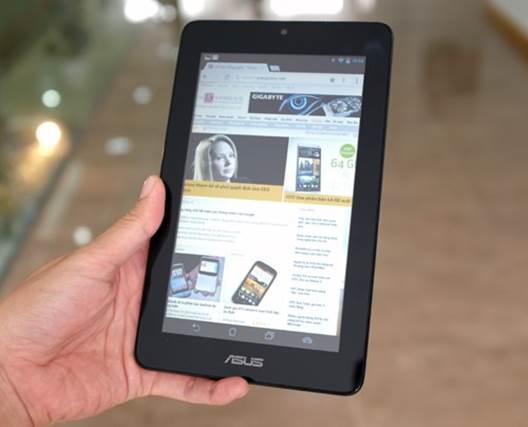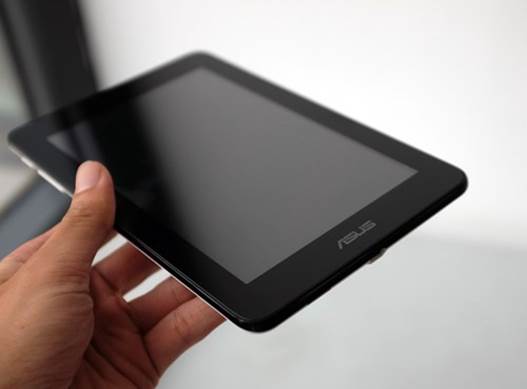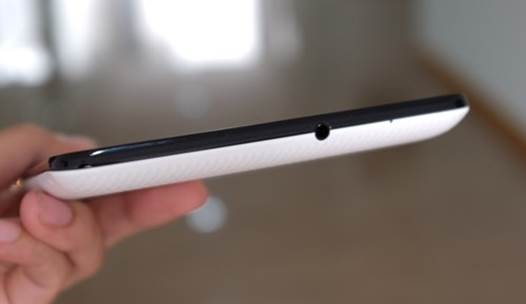In spite of its solid design and
high-capacity memory, the screen as well as the performance of the Memo Pad 7
is not outstanding enough compared to other models at the same price.
Design
The "narrowness" in the tablet
segment with high prices has made Asus decide on a new direction with the
7-inch Memo Pad model at just $150. This is on a par in terms of prices with
many un-branded Chinese models as well as some Vietnamese-brand models. To get
a cheaper price, Asus had to sacrifice a lot of specifications and turn to
students as well as the office employees who only have simple needs such as
surfing the web or reading e-books.

The
Memo Pad 7 is a cheap but quite attractive tablet.
The Asus Memo Pad 7 is equipped with a 7-inch
screen with the resolution of 1,024x600 pixels, a single core processor of 1
GHz, Mali-400 graphics processor, 1 GB RAM, internal memory of 8 GB, supporting
microSD card slot which can be expanded up to 64 GB. The device’s front camera
has only 1 megapixel resolution. The product supports Wi-Fi connectivity, A-GPS
positioning (over cellular).

The
white version’s back
The cheap Asus device has a quite similar design
with the Nexus 7, which was produced by Asus itself in collaboration with
Google. The design can be said to be quite nice even with the use of plastic
materials. On the back there is a intertwined-textured pattern with an Asus
logo. This surface helps make sure that the machine gets rid of dirt and
smudges even when your hand is sweating.
Meanwhile, the device’s front is very
glossy and attracts fingerprint smudges, so it needs a cover on the display
right after you buy it in the store. The display edges are a little narrower at
the sides of the device, but they are still long enough to press your thumb against
to hold it with one hand without touching the screen. The Memo Pad 7 does not
use any extra hardware keys on the front, but instead there is a series of
touch-sensitive keys like on the original Android OS.

Sturdy
design
If compared to the Acer Iconia B1 rival,
the MemoPad’s length is equivalent to about 196.2 mm but it is a little
narrower with the width of 119.2 mm and thinner with the thickness of 11.2 mm.
However, in terms of weight, the Memo Pad weighs 358 grams, about 10% heavier than
the opponent.
Asus just included the necessary physical
keys, such as the power button and volume rocker at the left. This creates a
bit of inconvenience for the majority of right-handed people as they have to
reach the left hand while holding on to the machine to be able to manipulate.
it

The
lower edge with the memory card slot and a microUSB connector

On
the top edge is the 3.5mm headphone jack.

The
Power button and volume rocker at the side.
Asus’s cheap tablet only has a microUSB
connector and a 3.5mm headphone jack at the bottom and on the side. At the rear
there is the speaker with a metal mesh slightly skewed to the left.
The nice design and brand can be seen as
two of the best features of the Memo Pad 7 tablet at the range of $150 models. The
products have a variety of colors with three versions to choose from, which are
black, white and pink.